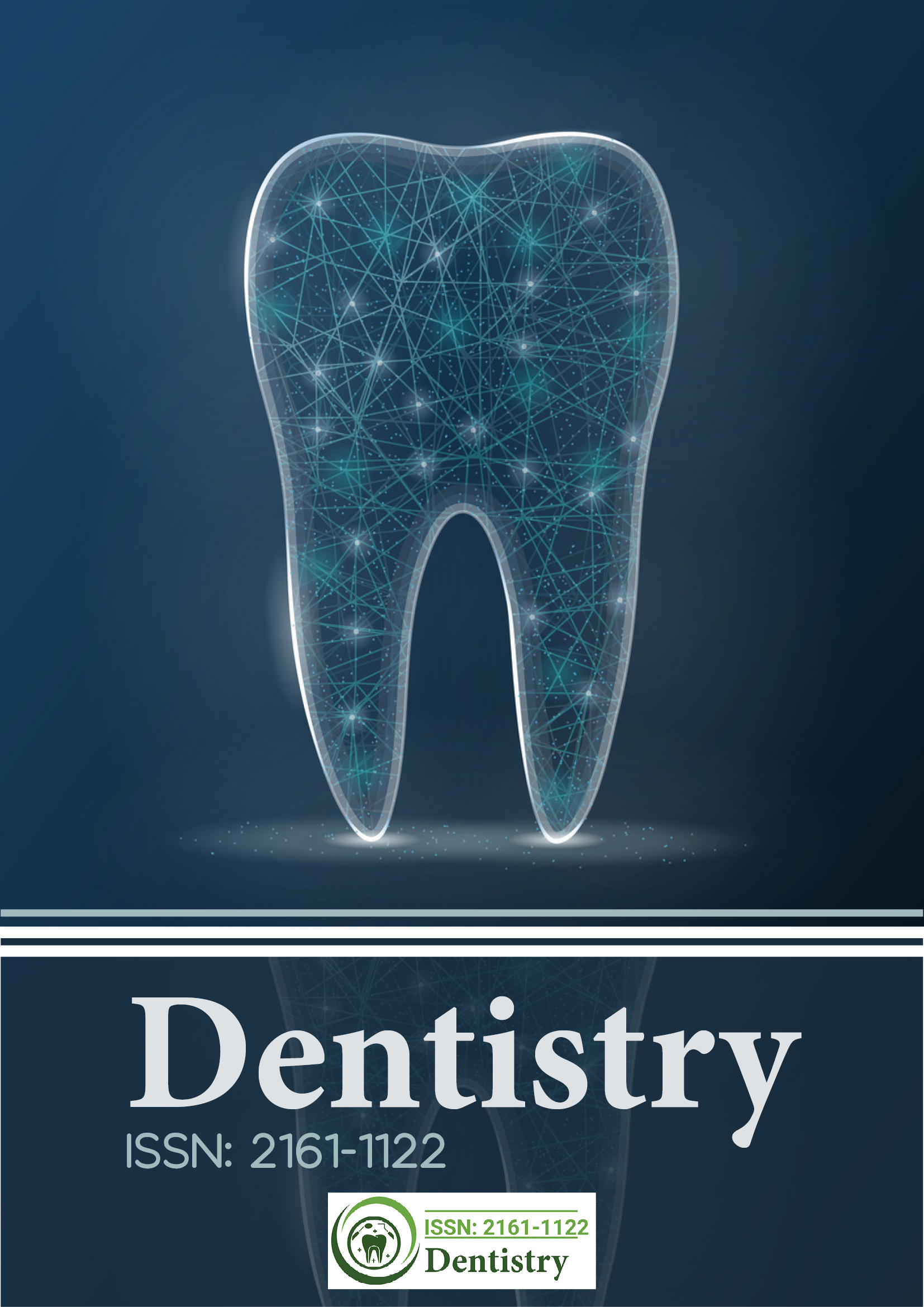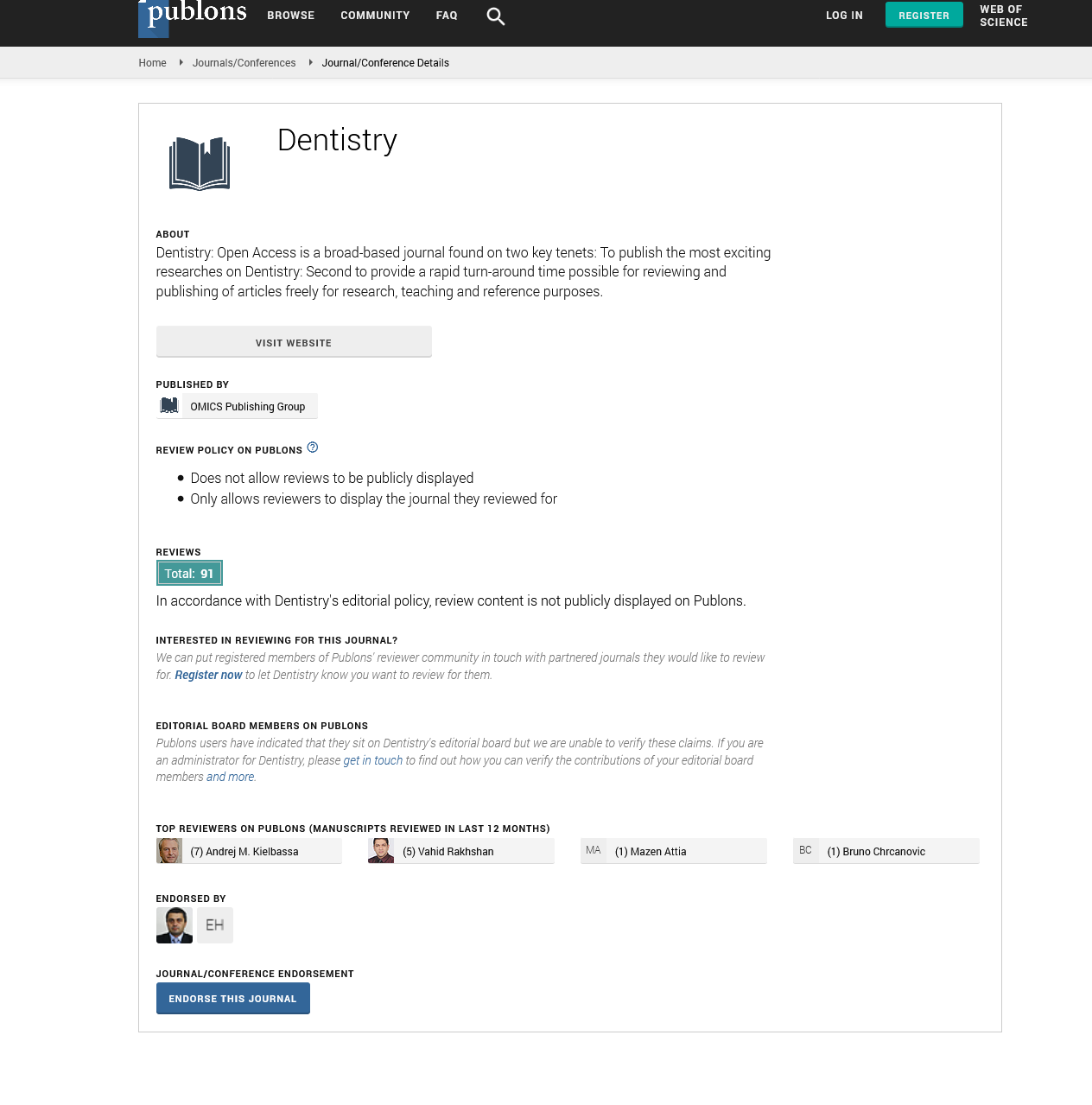Citations : 2345
Dentistry received 2345 citations as per Google Scholar report
Indexed In
- Genamics JournalSeek
- JournalTOCs
- CiteFactor
- Ulrich's Periodicals Directory
- RefSeek
- Hamdard University
- EBSCO A-Z
- Directory of Abstract Indexing for Journals
- OCLC- WorldCat
- Publons
- Geneva Foundation for Medical Education and Research
- Euro Pub
- Google Scholar
Useful Links
Share This Page
Journal Flyer

Open Access Journals
- Agri and Aquaculture
- Biochemistry
- Bioinformatics & Systems Biology
- Business & Management
- Chemistry
- Clinical Sciences
- Engineering
- Food & Nutrition
- General Science
- Genetics & Molecular Biology
- Immunology & Microbiology
- Medical Sciences
- Neuroscience & Psychology
- Nursing & Health Care
- Pharmaceutical Sciences
Abstract
Update on the Efficacy of the Dermal Apron Technique: Increasing Peri-Implant Mucosal Thickness and Tissue Stabili
Beyond immediate implant placement, including implant selection, position and prosthetic connection, measures to counter negative hard and soft tissue changes associated with toot-extraction are critical to achieving long-term stability of health and esthetics. This often includes bone grafting and soft tissue augmentation. Particulate bone allografts, xenografts, alloplasts and combinations are often inserted within the “gap” between the inner facial wall of extraction sockets and the implant. Further research advocates placing bone grafts not only within this “bone zone”, but also within the “soft tissue zone” between the inner lining of the soft tissue sulcus and the anatomically formed provisional restoration or custom healing abutment. This method of grafting is referred to as “dual zone” bone grafting. Implementing dual zone bone grafting techniques can better preserve ridge dimensions and produce greater soft tissue volume compared to non-grafted controls. Addition of soft tissue grafts, often of autogenous origins can further improve esthetics and preserve peri-implant, marginal bone levels. Another technique, the dermal apron technique® utilizing allogeneic dermis as an alternative to autogenous, intra-oral soft tissue, reduces morbidity, treatment time and costs. The dermal apron technique® also includes the use of a dual zone bone graft, consisting of 80% mineralized bone allograft and 20% bone xenograft. This procedure has demonstrated comparable soft tissue thickness to sub-epithelial, connective tissue grafts. Multiple comparative studies demonstrate the advantages of the dermal apron technique® over non-grafted controls and equivalence to autogenous grafts in this regard.
Published Date: 2025-01-16; Received Date: 2024-12-16

